Table Of Contents
As many of you who have read my written articles know by now, I’ve always been an all-steel handgun guy. I’ve never felt inadequate with what I have: a gunsmith-tuned Norc commander 1911 in .45 ACP, a Taurus 689 VR 6-inch in .357 Magnum, and a Rock Island M202 in .38 Special.
Having lived in the suburbs for a little under a decade now and working from home, I’ve never felt the need to get a smaller piece for concealed carry, much less one made of plastic. I’ve always had a dislike for plastic guns.
Passing Interest in Glock Gen 4
But being the true blue handgun enthusiast that I am, and being a guy who likes to try something new from time to time like all red-blooded men do, especially when that something is being sold at a bargain, I recently took a passing interest in a Gen 4 Glock 17.
My local LGS is selling a Glock 17 Gen 3 for $400 and a Glock 17 Gen 4 for $450. Both are enticing offers — but even if I had money to spare, I’m not sure I’d want one over the other. If you’re looking to for a different model, check out our Glock 17 vs. Glock 19 comparison article.
They’re both Glocks. They’re chambered for the same caliber too, and except for the latter version having a stamp on the slide that says Gen 4, they look and feel the same. But I know somehow that stamp isn’t just for show.
Glock Gen 4 Improvements
I’ve heard from friends that Gen 4 Glocks have a lot of significant improvements over previous-generation designs, but with those inevitably came unwelcome changes. The adage “you can’t make an omelet without breaking eggs” rings so true here. But to what extent?
Today, we’re taking a look at the problems commonly associated with Gen 4 Glock pistols in general. If you’re in the same situation I’m in and you’re torn between any previous generation Glocks and their Gen 4 counterparts, read on. Maybe you’ll find info to help you decide whether or not the Gen 4 you’re eyeing will fit your needs.
Overview of Gen 4 Improvements
Glock released the Gen 4 in 2010. And the first thing people noticed with these pistols is for the first time, they all bear the Gen4 mark on the slide. The company has finally acknowledged the way Glock owners label their pistols as far as generational improvements.
All Gen 4 models now have a “Gen 4” stamp laser-etched on their slides just next to the model number, making them easily distinguishable from previous-generation Glock pistols.
FINISH
Another new feature that distinguishes Gen 4 pistols from previous-gen Glocks is its finish. The company uses a newer salt-bath ferritic-nitrocarburizing finishing process which Glock aficionados refer to as Melonite.
The Melonite process presumably results in a more durable finish compared to the previous Tenifer process for better corrosion resistance on the slide’s surface. As far as aesthetics, there are some who don’t like it — they claim that the shade of black Gen 4 pistols use this time looks a little bit on the dull gray side of things.
I think it’s a subjective thing as I personally don’t care too much about Glock aesthetics. I mean come on, these are Glocks, not high-end custom 1911s. And reliability and beauty don’t always go hand in hand. As long as the finish is corrosion-resistant, I’m all for it.
THINNER FRAME AND CUSTOMIZABLE GRIP
Gen 4 Glocks also come with grips that are relatively thinner compared to all previous generation pistols. The grips were designed to be smaller for two reasons: one, so that people with smaller hands get a more solid purchase on it; and two, so that it can accommodate another new feature — interchangeable backstraps support.
Out of the box, Glocks come with four interchangeable backstraps from which people with bigger hands could choose to customize the overall width and feel of the grip. Different people can now choose to make the grip bigger (which is helpful for those with bigger hands) for a more solid purchase on the grip and more comfort when shooting.
BETTER GRIP AND MAGAZINE RELEASE
In addition to changes in the grips’ overall dimensions, Gen 4 Glocks now have a more aggressive texturing, which is a lot different from Gen 3 RTF (rough texture frame) grips that have uncomfortable needle-like checkering. This time, Glock Gen 4 pistols use a flat-cone-like type of checkering which provides similar levels of grip traction while being more comfortable to grab on to and easier on the hands when shooting.
Also on the grip, Gen 4 Glock pistols now sport a bigger, more pronounced magazine release button. This is a direct response to one of the most common complaints by Glock owners about the rather miniscule magazine release button on previous-gen pistols.
Not only is the magazine release bigger on Gen 4 Glocks, they’re also designed to be reversible out of the box. Left-handed shooters can now easily install the button on the handgun’s right side so they can actuate it with their left thumb.
Because of the reversible magazine release button feature, Glock also designed the magazines to have notches on both sides. This is to allow for the same magazines to function in the same gun regardless of whether the magazine release button is installed on the left or right side of the frame.
And speaking of magazines, Gen 4 pistols now come with three magazines in the box instead of the usual two (though Gen 4 pistols typically cost slightly higher than Gen 3s even when factoring in the cost of the additional magazine and the backstraps).
STRONGER RECOIL SPRING ASSEMBLY
Another readily visible difference can be easily seen when looking closely at the business ends of Gen 3 and Gen 4 pistols. The latter’s recoil guide rod has a larger diameter and this isn’t for show. The bigger-diameter guide rod is part of a newer recoil system designed to minimize wear on the frame.
Glock pistols chambered for .40 S&W use the exact same dimension recoil guide rod and spring that 9mm Glocks pistols use. Since the first Glocks were originally designed for the 9mm which has a weaker recoil compared to the .40 S&W, the recoil guide rod and recoil spring rated for 9mm recoil are considerably weaker against the snappy recoil of the .40 S&W. This resulted in faster frame wear in Gen 3 Glocks chambered for the .40 S&W.
The newer dual-captive spring recoil guide rod was designed to alleviate this problem. These recoil springs are much different from the old springs as they’re captive (meaning the user wouldn’t have to worry about losing the spring when they field strip the gun as it’s attached to the guide rod). The new spring attaches to the guide rod via a steel lip on the end. The old spring doesn’t have this steel lip — it just rides against the guide rod, similar to how typical 1911 recoil springs function.
To fit the new beefier recoil guide rod, Gen 4 slides have to have a bigger cutout portion in front. This means a Gen 3 recoil guide rod will not fit in a Gen 4 slide unless you use one of the adapter rings they sell on their website.
Glock Gen 4 Problems
As the grip and frame profile is now a little slimmer, Glock had to reshape the slide’s internal design. Comparing Gen 3 and Gen 4 slides, we noticed that there are slight differences especially in stress points where some of the slide’s walls are longer and thicker.
Because of all the alterations in the frame and grip dimensions, three key components of all Gen 4 handgun’s action also had to go through slight changes in measurement — specifically the size of the ejection window, the extractor, and the ejector.
With all the features come problems that early adopters of the Glock Gen 4 had to put up with, three of the most common problems being directly related to the change in frame and grip dimensions. One of them is the Gen 4’s heavier trigger pull.
HEAVIER TRIGGER PULL – Glock Gen 4 Problems #1
Because the Gen 4’s grip is thinner, it logically follows that the frame and slide have to be thinned out a little as well. With the slightest changes in the overall dimensions of the frame and slide, a somewhat smaller trigger group has to be used.
Field-stripping the pistol and examining the internals reveal a bulge on that part of the trigger bar that sticks out (this part is supposed to deactivate the trigger safety whenever the trigger is pulled, thus firing the weapon). It looks strangely different when compared to the same part on a Gen 3’s trigger bar.
Glock reportedly put that little bulge on there to make sure the firing pin stays centered when striking the primer of a chambered cartridge.
This little bulge rides up against the inside part of the slide, causing the trigger bar to poke out a little more to indent the plunger a bit more. This way, Gen 4 handguns stay reliable even with their newly designed slimmer frame profile.
Unfortunately, the friction that results from that little bump grinding against and the inner parts of slide causes a rough and heavy trigger pull (which is why some people who own both Gen 3 and Gen 4 Glocks make the claim that the Gen 3’s trigger pull weight is slightly lighter) — not to mention it makes reassembly after field stripping a real pain. Also, the angle of the new connector causes it to be 5 degrees more in the plus direction, which greatly contributes to the heavier trigger pull weight.
Nothing a Dremel Can’t Fix
There are some users who filed that little bulge smooth with a Dremel — they claim that filing it results in a lighter trigger pull and an easier reassembly after field stripping the gun for cleaning. The problem with this is it voids the warranty. The only way to get around the heavier trigger pull issue is by installing a minus connector to lighten the trigger pull. As for the reassembly pain, some people just get used to it.
EJECTOR ISSUE – Glock Gen 4 Problems #2
The ejector on newer Gen 4 frames is also a little smaller and a tad bit thicker with a more pronounced curvature toward the point where it tapers, but it didn’t always look like this. Glock only installed this new ejector design in later production Gen 4 frames because the earlier ones used the same ejector that Gen 3s used which didn’t quite work out the way they thought it would — specifically, it resulted in a lot of BTFs (brass to the shooter’s face) and FTEs (failure to eject).
Newer production models now sport the new ejector after the company identified the problem with the old Gen 3 ejector being used for Gen 4 Glocks. But there’s still an issue with this. Those who weren’t fortunate enough to have bought any of the earlier production Gen 4 models have to deal with all the BTFs and FTEs these guns are known for.
The only thing these Glock Gen 4 owners can do to fix their gun is to buy and install a new part with the new ejector design integrated with it. It’s an aftermarket drop-in trigger housing upgrade kit (Part no. 30274) which in my opinion should be provided only as a free upgrade, kind of like what SIG Sauer did with the whole accidental discharge issue they had with their P320. It shouldn’t have to be put up for sale.
STOVEPIPING – Glock Gen 4 Problems #3
In a lot of cases where owners aren’t experiencing BTFs or FTEs, Gen 4 handguns would commonly have stovepipes (i.e. a kind of FTE where the spent case is not getting properly pushed out of the ejection port, causing a jam).
There are two common causes of stovepiping, the first of which applies to most any type of firearm: limp wristing. Limp wristing is where there’s not enough user resistance against the slide, making the whole gun move back instead of just the slide moving back.
This causes the slide to move back slower, which causes the case to get stuck. In most cases, proper training and more time in the range doing practice shooting helps, but with earlier production Gen 4 Glock models it’s not that simple.
The newer recoil spring assembly with dual captive springs are designed for more powerful NATO versions of common handgun calibers. The dual springs are too heavy for lighter factory loads and reloads. If the user knows that limp wristing isn’t the cause of stovepipes, they can contact Glock at (877) 745-8523 to ask about their Recoil Spring Exchange Program and request for a new set of recoil springs.
A Glock representative will ask for the handgun’s serial number to see if it qualifies for a new recoil spring and if it does, they’ll send a package that includes a new recoil spring and a packing slip to send the old one back to them.
Glock Gen 4 Problems – Conclusion
As far as we’re aware, all of the issues surrounding earlier production Gen 4s have been resolved. For one thing, Glock wouldn’t have entered the Modular Handgun System Competition in 2016 with their Gen 4 handguns in 9mm (G17 and G19) and .40 S&W (G22 and G23) as their MHS entries if all these Gen 4 problems haven’t been fixed yet.
It’s been eight years since the earliest production Gen 4 Glocks were released, and after reading through countless forums, talking to actual Gen 4 Glock owners and testing some of them ourselves, we can say that all these issues have been resolved in newer production runs. All current production Glock Gen 4 pistols are as reliable as ever.
Now there might be a few Gen 4 pieces in your LGS that are from older production runs, but even then, all you really need to do if you recently happen to have purchased one is return the piece to them and either ask for a refund or a newer production Gen 4 Glock as a replacement. If you have a Gen 4 Glock 42, you might want to take a look at the best Glock 42 holster available.
I’m personally not a fan of Glocks and I don’t think I ever will be, but these handguns are popular for a reason: they strike a good balance between affordability and reliability. I love my EDC to death, the gunsmith-tuned Norc 1911 I mentioned earlier — but I wouldn’t feel undergunned if all I’m ever left to carry is a Gen 4 Glock.
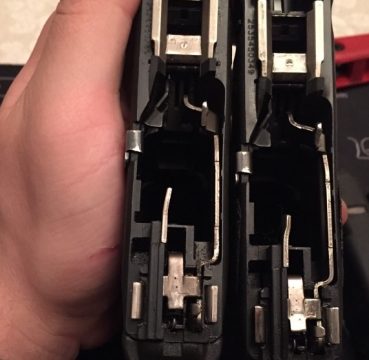


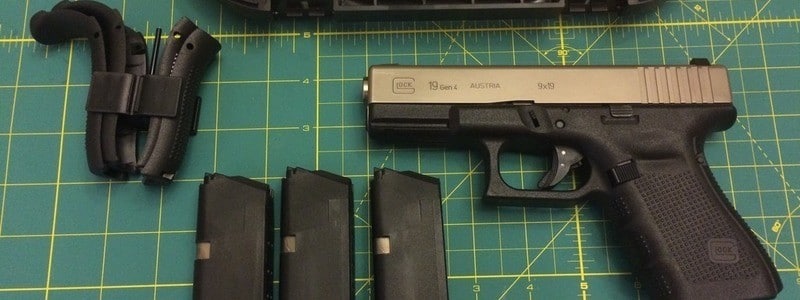
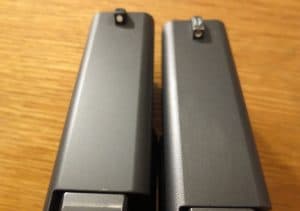

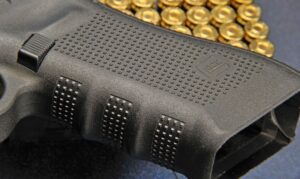
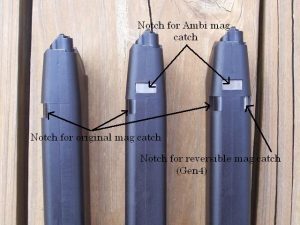

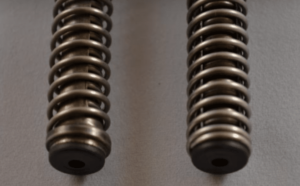
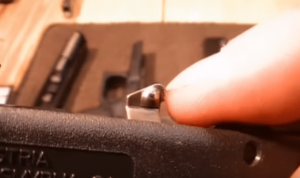

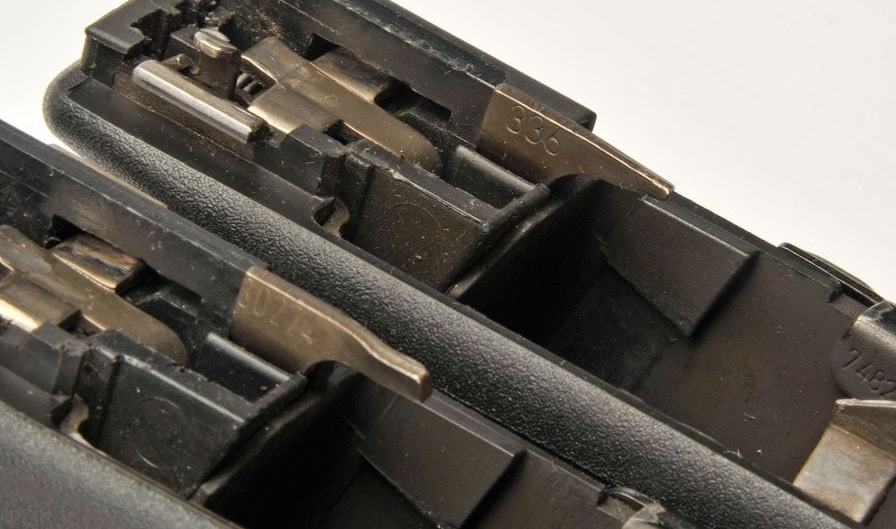
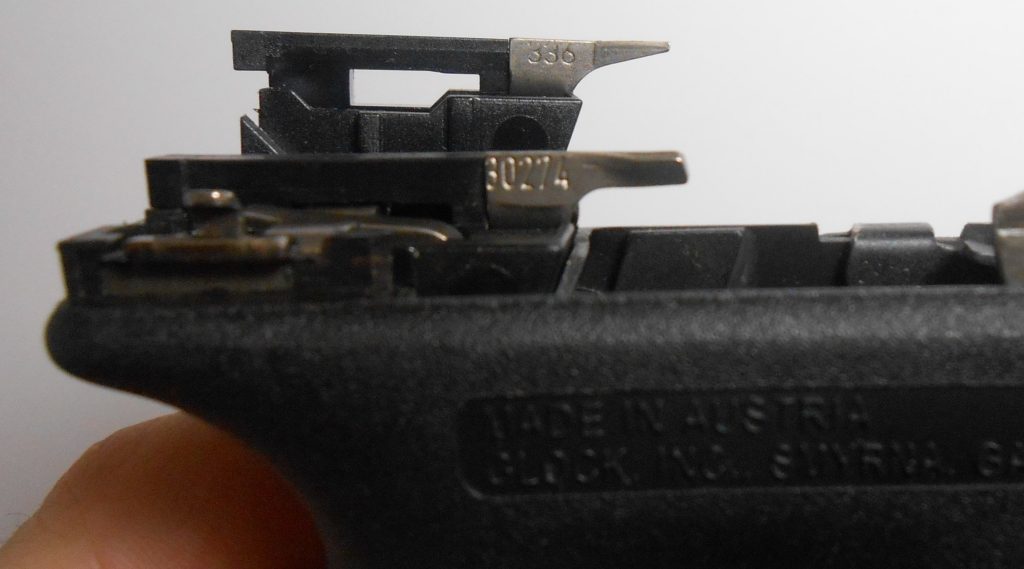
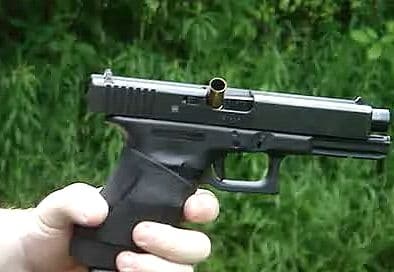









4 Responses
“Left-handed shooters can now easily install the button on the handgun’s left side so they can actuate it with their left thumb.”
Shouldn’t this be: Left-handed shooters can now easily install the button on the handgun’s right side so they can actuate it with their left thumb.
thanks this was very helpfull!!
I like it a lot. glock make me a happy boy buuuuutifo
Thanks for the detailed update. Is there any way I can tell if a used G4 that I want to buy is the latest improved G4. Like serial # or the year it was purchased.
Thanks,
Jay